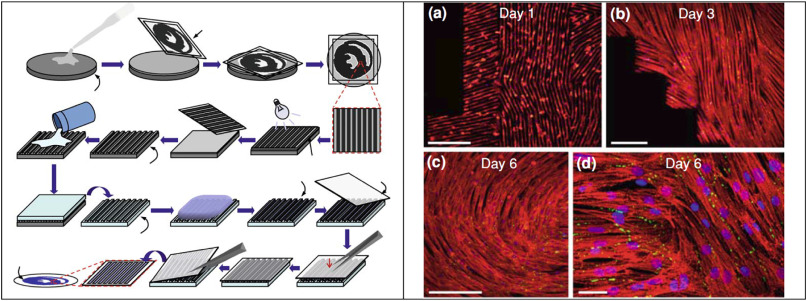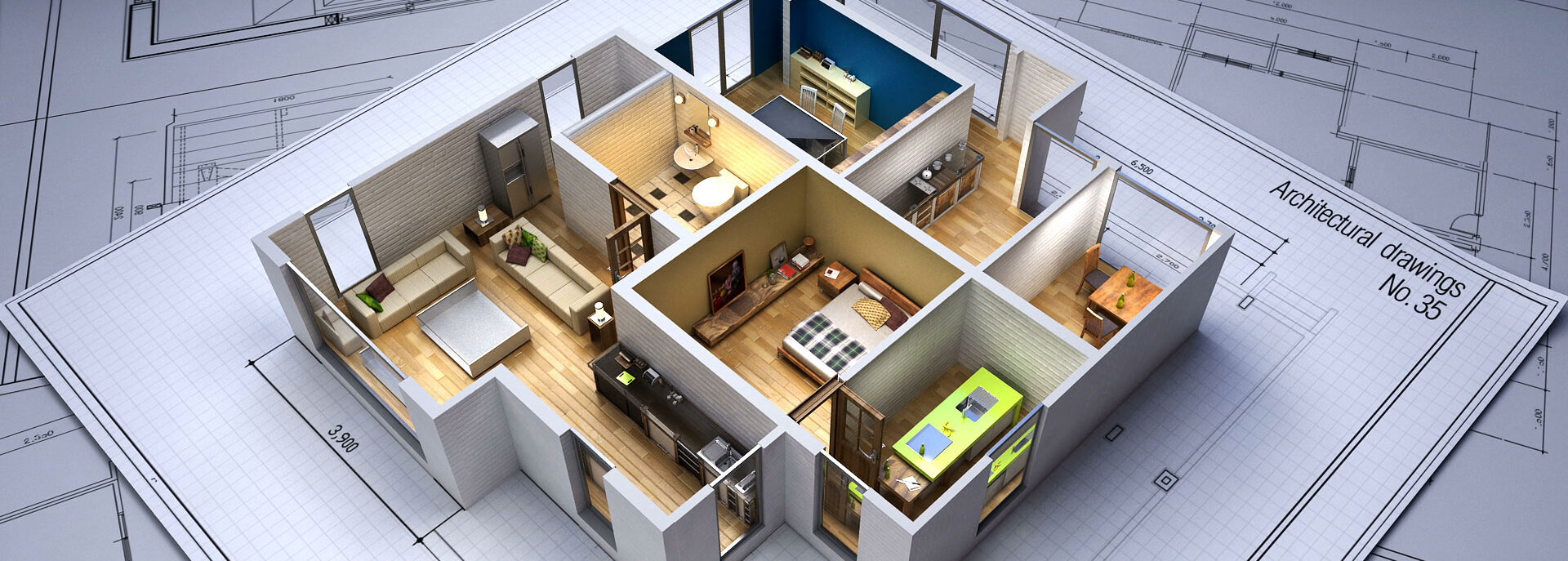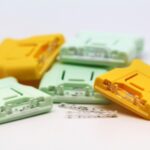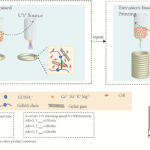

An organ on a chip is a tiny cell culture that mimics the structure and function of human tissue – a micro-organ, if you will, that allows scientists and medical professionals to test pharmaceuticals and other treatments. In a paper entitled “Heart on a chip: Micro-nanofabrication and microfluidics steering the future of cardiac tissue engineering,” a group of researchers discusses the use of 3D bioprinting and other techniques to create a heart on a chip.
The researchers present a thorough look at the many ways in which cardiac tissue engineering has been approached.
“Optical lithography, soft lithography and plasmas have provided tools for structural and chemical modification in planar two dimensional fashion,” they state. “Lasers, electrospinning and 3D bioprinting have provided the capability to advance the fabrication even further, by providing the tools to fabricate structures into three dimensions. In several cases the combination of these techniques is employed, where additional functionalities or capabilities are needed from the construct. These approaches focused on culturing cardiac cells in a biomimetic environment in order to create a functional cardiac tissue.”
In these approaches, the main objective was to recapitulate the ECM that support cardiac cells; thus, the substrates or scaffolds are made from polymer materials. Depending on the method, cardiac cells were seeded on top of micro-nanoengineered materials in 2D or 3D structures or encapsulated within the polymeric matrix.

“The 2D structures have provided with useful information on the effect of geometries on cardiac cells structural properties,” the researchers state. “The 3D scaffolds have been applied, although in a limited number, for cardiac cell therapy by means of implantation in animal models carrying a specific cardiac disease. The idea of this therapeutic direction is on restoring some functionality in heart scarred regions by providing a new pool of functional cardiac cells. This application falls under the category of cardiac regenerative medicine with final target the clinical trials by implanting the cellularized scaffolds to patients.”
3D printing makes sense as a way to create a heart on a chip, as cardiac cells can be taken from patients and deposited in a layer-by-layer approach that allows them to grow into a micro-organ. This allows scientists to study the cardiac pathophysiology and test drugs in vitro, and can also lead to individual patient-targeted therapy. These hearts on chips can also provide useful information about treatments that should not be used to treat cancer, for instance, because they are found to cause cardiac cell toxicity in the miniature culture. These discoveries offer more value than testing on animals, whose physiology does not always respond in the same way to drugs as does that of humans.
Microfluidics are also a big part of the creation of hearts on chips. The researchers point out that the technology is starting to be used to mimic specific diseases such as pathological cardiac hypertrophy and ischaemia.
“Actually, some of the described micro/nanofabrication technologies have been incorporated to the microfluidic systems, such as microcontact printed molded structures, as well as bio-printed 3D scaffolds, even though these cases pose the minority,” the researchers explain. “We envisage that the prior knowledge and the correct translation of the information extracted from the use of micro/nanoengineering in cardiac tissue engineering can lead to the development of multi-diverse ‘Heart on Chip’ systems tackling a wide spectrum of cardiac diseases.”
Authors of the paper include Maria Kitsara, Dimitrios Kontziampasis, Onnik Agbulut and Yong Chen.
Discuss this and other 3D printing topics at 3DPrintBoard.com or share your thoughts below.
If you're looking to get an architectural rendering quote in the USA, our service provides a simple and efficient process to obtain the best pricing tailored to your project. Through our platform, you can easily submit your project details and receive a competitive quote from our team of experts. We offer high-quality 3D renderings for both interior and exterior designs, helping you bring your architectural visions to life with stunning precision. With our support, you can be confident in receiving professional services at affordable prices, without the hassle of dealing with multiple vendors.
Getting an accurate architectural rendering quote has never been easier. Through our portal, you’ll have direct access to a streamlined process where we guide you step by step, ensuring all your needs are met. Our 3D rendering experts work closely with you to ensure the final product matches your expectations, whether it’s for residential, commercial, or mixed-use developments. Trust our platform to provide you with the best possible rates and results, all with a quick turnaround time and exceptional customer support.





